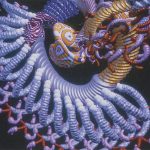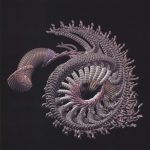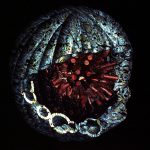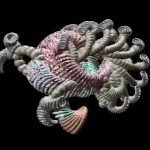William Latham
Art Works:
-

Biogenesis
Categories: [Animation & Video]
[SIGGRAPH 1994] -

Mutation X
Categories: [2D & Wall-Hung]
[SIGGRAPH 1992] -

Computer Plant Form 3
Categories: [2D & Wall-Hung]
[SIGGRAPH 1990] -

Computer Sculpture #3
Categories: [2D & Wall-Hung]
[SIGGRAPH 1988] -

Mutations
Categories: [Animation & Video]
[SIGGRAPH 1992]
Writings and Presentations:
-
Title:
Generative and Genetic Art
Writing Type: Panel / Roundtable
Author(s):
Exhibition: SIGGRAPH 2006: Intersections
Abstract Summary:This panel brings together leading experts of generative and genetic art from the past 25 years, all of whose work has been featured at the annual SIGGRAPH conferences during this period. The panelists examine a range of topics including: “chance and creativity,” “can art be an equation?” “the procedural and generative software toolbox,” “artist as god,” “the creative peaks and troughs of traveling through multidimensional parameter space,” and “genetic art into genetic engineering?” With the gr
Title: The Emergence and Growth of Evolutionary Art - 1980-1993
Writing Type: Paper
Author(s):
Exhibition: SIGGRAPH 2013: XYZN: Scale
Abstract Summary:One of the most interesting-if frustrating-aspects of charting the history of computer art is trying to understand the intersections of specific technologies and artistic experimentation. It is rarely as clear-cut as a simple linear influence of one to the other, partly because artists are able to envision all kinds of possibilities that technology might enable them to realize in some kind of form, but as they do so, the technology is itself shaped, especially in terms of how it is perceived by others. Do artists find a way to give technologies an aesthetic outlet, or do some technologies possess-or facilitate-a characteristic aesthetic that finds its expression through specific artists? Certainly, in the history of computer art it would seem that particular aesthetics, technologies, and artists are closely intertwined in certain periods. This intertwining of art, technology, and ideas stolen from the natural world has never been so arguably merged as the period in the history of computer art from 1980 to 1993. We take as the defining start of this period the initial work of Mandelbrot on fractals that became known as the Mandelbrot set and led to his famous illustrated art-science book The Fractal Geometry of Nature. In 1993, this first highly creative period in evolutionary computer art came to an end with major publications by pioneers Karl Sims, Stephen Todd, and William Latham.
Role(s):




